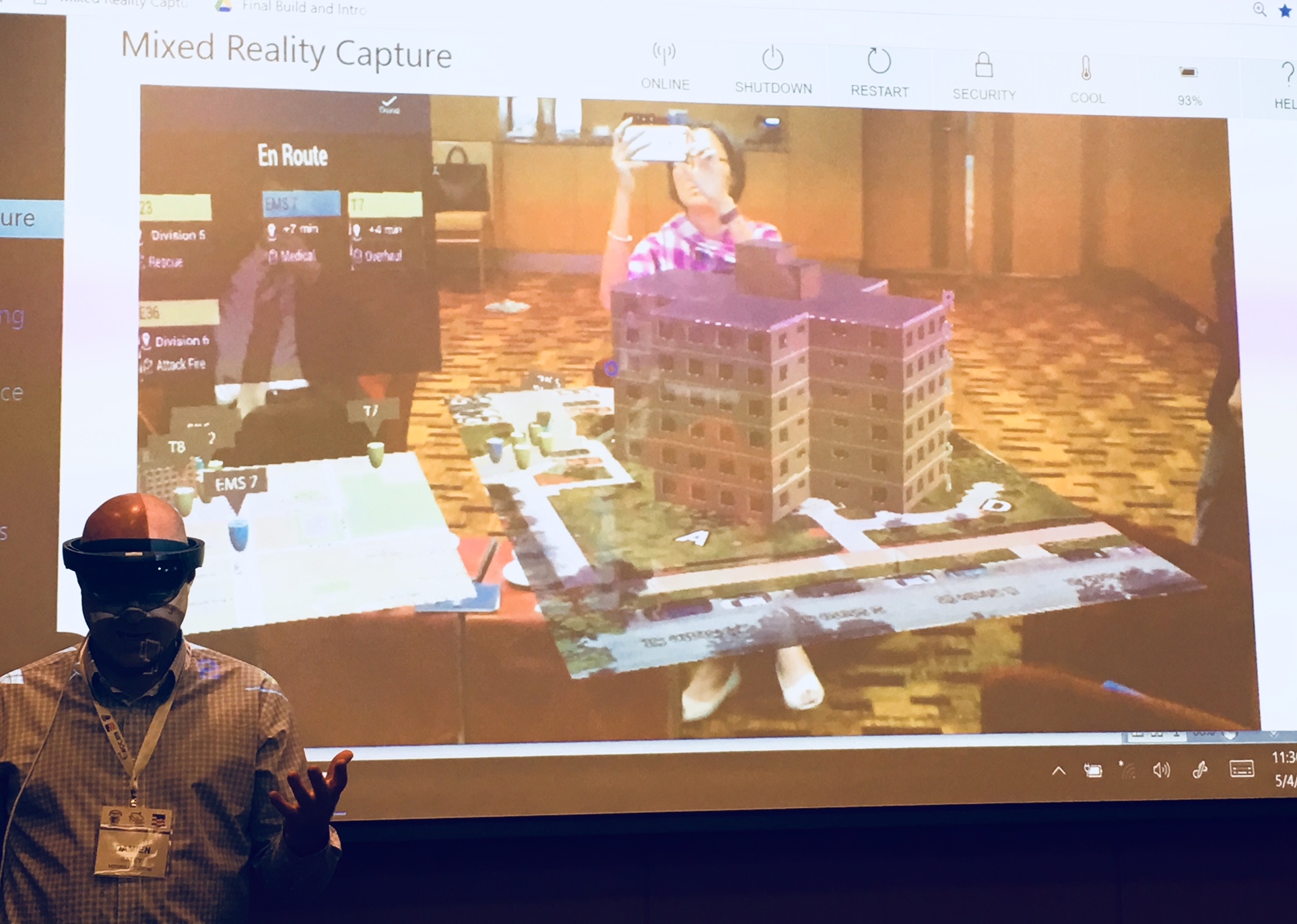(Caption for pic above: Mixed reality capture – Motorola’s virtual command centre platform, together with Microsoft’s Hololens’ projection capability enables navigation of the virtual dashboard with simple hand gestures).
2018 marks Motorola Solutions’ 90th year in existence, since being founded in Chicago in 1928. So much has happened since, and definitely one of the more noteworthy events, is the indelible mark that Motorola innovation has left upon the world of land mobile radio (LMR) and digital mobile radio (DMR).
The work they have done with radio communications technologies for government and public safety agencies is commendable, but Motorola Solutions (Motorola) has also recognised from early on, that the adoption rate of mobile devices and mobile data in these sectors, cannot be overlooked.
Their response? To converge proven and established technologies with new ones, for better public safety response to critical events.
No stopping the data revolution
According to Motorola Solution Malaysia’s Country President, Datuk Rauf Nasir, along with increase in mobile broadband’s capability to handle more data capacity, the appetite for visual media has increased, fueling usage trends like 1.3 billion YouTube users, and 300 hours of videos being uploaded every single minute today.
“Ninety-percent of the world’s data right now, was generated in just the past two years,” he said, drawing attention to the point that mobile data usage is extremely popular, the amount of data being generated is mind-boggling. This increase in data is not going to stop but in fact, accelerate even more in the future, thanks in part to the use of video, and other streaming media.
By 2020, 30-percent web browsing sessions will be done without a screen, he also said.
This brings to mind some movies which depict the extensive use of 3D holographics and other equally futuristic technologies, like ‘Minority Report’ or Marvel’s ‘Iron Man’ series.
Imagine virtual reality, or augmented reality. Mobile and location-based games like Pokemon Go use augmented reality technologies, to allow players to extend the game scenario beyond the mobile screen and into their surroundings in the real world.
What if this same idea could be used in a fire disaster scenario or any environment that can benefit from more visibility and more visual data?
With live feeds of on-the-ground events, resources, layout of the building and more, viewed within a virtual dashboard, this real-time flow of contextual information to this virtual reality dashboard would enable a fire department chief to deploy resources like manpower more efficiently and with the least risk, for the most optimum outcome.
This is a virtual and future concept of Motorola’s existing CommandCentral Platform that is currently being used by government agencies like the Detroit Police.
Fit-for-purpose technologies
A survey in the United States, found out that 0-percent of public safety agencies plan to retire their LMR communications technologies, even though there is already adoption of FirstNet.
FirstNet is a broadband network infrastructure owned by the US Government, to support public safety agencies in the country, while land mobile radio communications is already widely used by public safety agencies all around the world.
In the US, LMR will continue to be a key communication technology between the agencies and among their first responders. Datuk Rauf added, “I can tell you that this is happening here also, in this region.”
Besides video, there are other apps the first responders require to be able to carry out their work, for example database query, to quickly find out the validity of a car’s road tax, or if a suspicious-looking person has records of previous offences.
Datuk Rauf opined that despite technologies like mobile broadband coming in to support public safety work, it is not suitable when used in isolation. For example, it is detrimental for a police officer to be typing in queries on their mobile broadband devices, when they need to be alert during critical situations.
“Safety of first responders is a major concern, and voice intelligence applications can help them be safer by enabling them to keep their eyes up, and their hands free.”
Remaining ‘eyes up, hands free’ also helps them to be more alert to their surroundings and increase their situational awareness.
“With voice-control communications, basic queries via voice, voice analytics and other voice-based features, voice continues to be an important communications medium for first responders and public safety.
“We work closely with public safety agencies in Malaysia, and I see this trend,” Datuk Rauf said.
Increasing situational awareness
Motorola recognises that voice communications and video communications can be complementary to each other, because of the timely situational awareness that video offers, especially when key decisions need to be made.
The CommandCentral platform is just one way that Motorola is bringing together radio and video communications, as well as live feeds of citizen-generated data, to give first responders a more complete picture of critical and risky environments.








